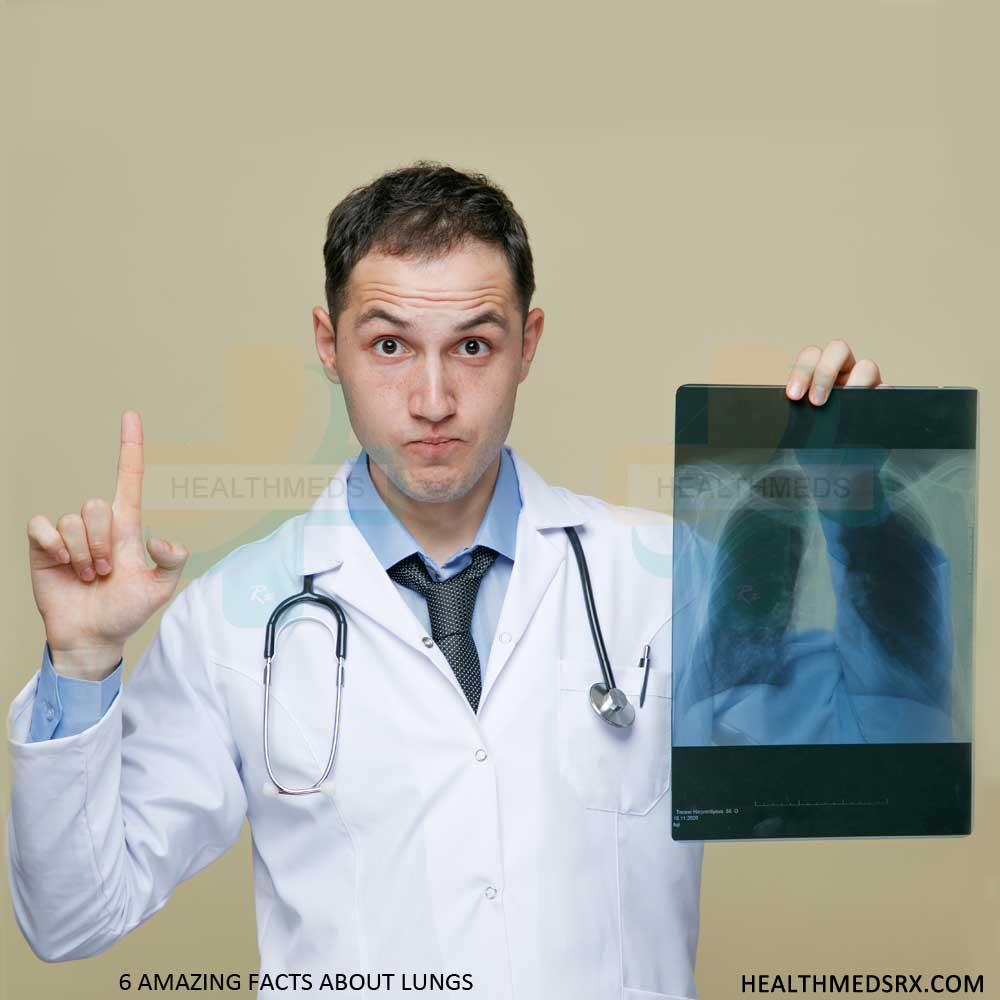Lungs are commonly soft, light weight, spongy & elastic organs. Right after birth, the organs are filled with air as the human child breathes.
Human lungs are covered in a thin membranous hollow bag called the pleura, and each is brought together with the trachea by its large air passageway main bronchus and with the heart by the pulmonary arteries.
Human beings have dual lungs, one on each side of their chest. This is also called thorax, this thorax is placed between the neck and abdomen.
-
Right Lungs
-
Left Lungs
Right Lungs
The right side is divided into three lobes. They are
-
Superior,
-
Middle.
-
Inferior.
The right lung is shorter than the left lung, but the right lung is wider than the left lung. In male body the weight of the right lung is 155g – 720g and in the female body the weight of the right lung is 100g to 590g.
Left Lungs
The left side is divided into two lobes. They are
-
Superior
-
Interior
The size of the left lung is smaller than the right lung, because the organ heart is placed in the middle of the left lung. In male body the weight of the right lung is 110–675g and in the female body the weight of the right lung is 105–515g. The right lung doesn’t have two parts present in the left lung. One is the Cardiac notch and another one is lingula. Heart fits in the cardiac notch and extension of the superior lube is lingula.
Function of Lungs
Lungs are doing excellent functions in the human body. Oxygen is a main source to keep the cells active in every organ of the body. Lungs always make the oxygen available in the body and eliminate other gas such as carbon dioxide from the body. Every minute this process will happen 12 to 20 times.
When a person breathes in air through the nose or mouth, air travels down the back of the throat pharynx, passes through the voice box larynx and into the windpipe trachea.
Trachea is separated into two air passages called bronchial tubes. One bronchial tube goes to the left lung and another one bronchial tube goes to the right lung. Lungs perform their best, airways always require to be open when breathing in air and when breathing out air. They also require to be free from inflammation or swelling and also free from abnormal amounts of mucus.
Each bronchial tube connected bronchi. This bronchi is called as smaller air passages. This bronchi is connected to the bronchioles. The bronchioles end in a very tiny air bag called alveoli. In the alveoli place oxygen is supplied from the breathing in air to blood. This Alveoli looks like a cluster of tiny round fruits.
After absorbing or collecting oxygen, the blood leaves lungs and is carried to the organ heart. From there, it’s pumped through the body to supply oxygen to the cells of tissues and organs.
Once the cells use oxygen, they make carbon dioxide and supply it to blood. The bloodstream transfers the carbon dioxide back to the organ. During the process of breathing out air, carbon dioxide is automatically eliminated from the body.
Amazing Facts about Lungs
- Color: Commonly human healthy lungs look pinkish-gray in color. People who are having smoking habits for the long term, their color will change from pinkish-gray into darker gray. Lungs also have some black spots.
- Shape: The right lung is triangularly shaped and the left lung looks like the ears of an elephant.
- Weight: The weight of the human lungs is 1.1 kg. Naturally the weight of male lungs is greater than female lungs. The only organ in the human body will float in the water is Lungs, because it contains so much air that is contained within alveoli.
- Sizes: The size is 9 inches longer in normal and about 10.5 inches when the lungs are completely expanded. The lung’s size will be equal to a full tennis court, when it is unfolding and expanded.
- Capacity: The normal capacity of an adult lung is approximately 4 to 6 liters of air. Commonly, males have larger lung capacity than females. In every breath human beings only breathe in about 0.5 liters of air. During breathing our air process automatically loses a small amount of water from the body. At rest, the human body loses 0.5 ounces of water and loses up to 2 ounces of water while doing workouts. Even if a person is really hard to exhale, 1 to 1.2 liters of air remains in the organ. The small air sacs called alveoli, this is doing the gas exchange process. Commonly an adult lung having more than 300 million to 500 million alveoli.
- Dead Air: All inhaling air is not present in the gas exchange process, because a small amount of air never reaches the alveoli. This type of air is referred to as dead air due to it not being used in the gas exchange process. Human body is naturally likely to inhale due to the high levels of carbon dioxide present in the blood rather than low levels of oxygen. So, When human beings breathe, 70 percent of waste is removed in the form of waste gasses like carbon dioxide. Naturally human beings don’t have to think about the breathing process (inhale and exhale) due to the medulla oblongata in the brainstem.
Lungs are an important organ in the human body, so people should keep their lungs healthy. Avoiding smoking toxic gasses evacuated from industries is good for the organ. Better to stay away from smoking habits is good for lungs to protect from various health issues. Those who want to quit their smoking habits, using the generic zyban is the best choice.


